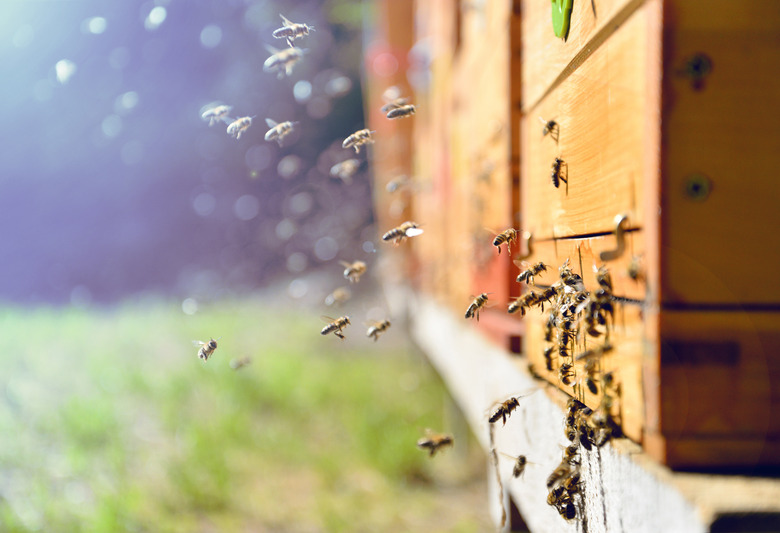What Characteristics Do Bees & Ants Share?
Bees and ants may look and act very different, but since they are both members of the same biological phylum, class and order in the animal kingdom, they must have some similarities. Most people think of honeybees when they think of bees. Honeybees and ants are both insects and both belong to the order hymenoptera, but after that they separate into different families.
Class: Insecta
Class: Insecta
Insects have three pairs of jointed legs, a three-part body and an exoskeleton. Bees and ants have all three of these characteristics. Wasps are also in this group, and bees and ants share with them the characteristic of a constricted separation between their thorax and abdomen that we call a "wasp waist."
Order: Hymenoptera
Order: Hymenoptera
This group of insects have two pairs of "see-through" wings, and the front pair is larger than the back pair. All bees have wings and fly. Most of the ants we see have no wings and can't fly. This might look like a difference rather than a similarity, but ants do fly when they need to, which is when they reproduce. Newly-hatched queen ants have wings, and so do male ants. They fly to mate, after which the males die and the fertilized queen flies away to create a new colony. Also characteristic of this group is a juvenile stage of development called a larva. Both baby bees and baby ants, after they hatch from the egg, are squiggly little things that look nothing like what they will grow up to be.
Family
Family
Here's where bees and ants start to differ. Bees are in the family apidae, while ants are in the family formicidae. Even though their physical similarities become less, bees and ants continue to be alike in some aspects of their behavior.
Social Living
Both bees and ants live in colonies that have at least one queen, few males and many specialized workers that are all female.
Food Processing:
Food Processing:
Bees process their food, meaning they take raw material from nature — nectar from flowers — and change it into something they can store and eat later — honey. Some ants are carnivorous, but some are vegetarian and actually process their food by farming. Leafcutter ants take vegetation to their underground nests, chew it up and use this mulch to grow a special fungus that they eat. Some ants "herd" other insects called aphids, protecting them from predators and moving them from plant to plant so they can suck sap and excrete a sweet liquid called "honeydew" that the ants drink.
Defense
Defense
Both bees and ants can sting, but for the bee it's a suicide mission. Honeybees defend their colony by stinging intruders, but once they sting, they die because their barbed stinger remains in the victim, pulling the bee's venom sac and insides out when it does. Most ants also sting, but their smooth stinger comes right out and they can sting repeatedly without hurting themselves. Other ants bite rather than sting, but some, like the fire ant, do both.
Cite This Article
MLA
Adams, Martha. "What Characteristics Do Bees & Ants Share?" sciencing.com, https://www.sciencing.com/characteristics-do-bees-ants-share-8218385/. 22 November 2019.
APA
Adams, Martha. (2019, November 22). What Characteristics Do Bees & Ants Share?. sciencing.com. Retrieved from https://www.sciencing.com/characteristics-do-bees-ants-share-8218385/
Chicago
Adams, Martha. What Characteristics Do Bees & Ants Share? last modified March 24, 2022. https://www.sciencing.com/characteristics-do-bees-ants-share-8218385/
